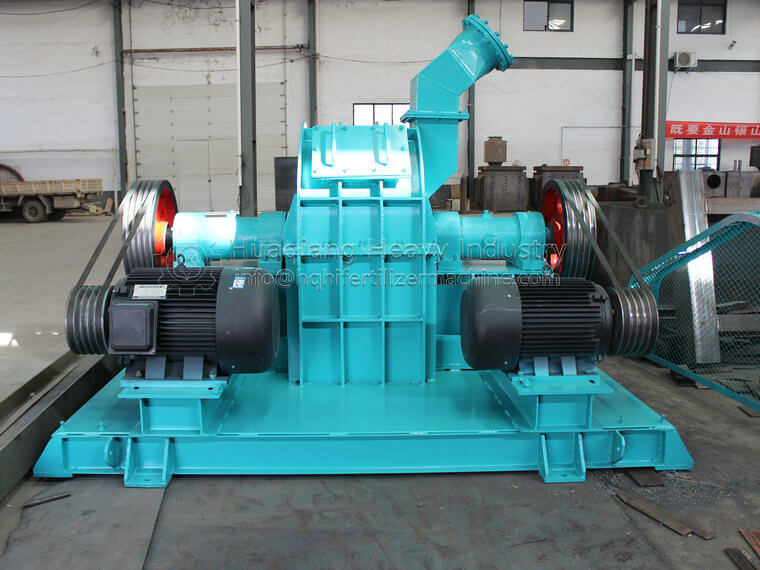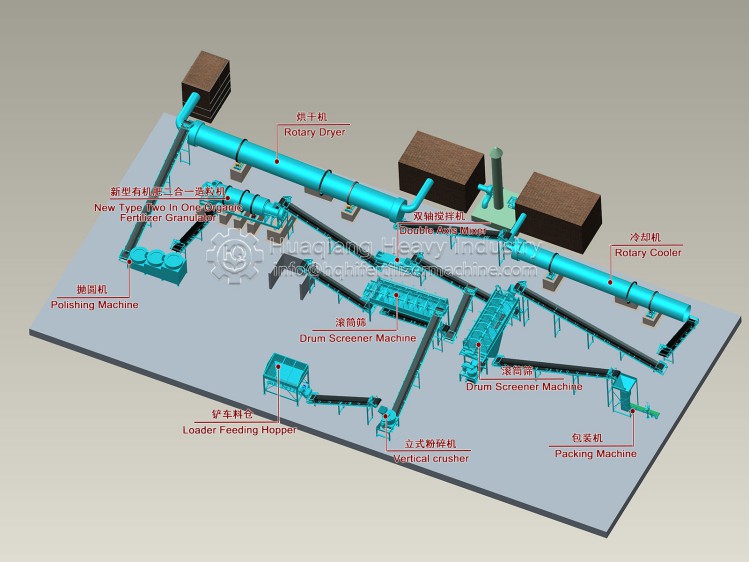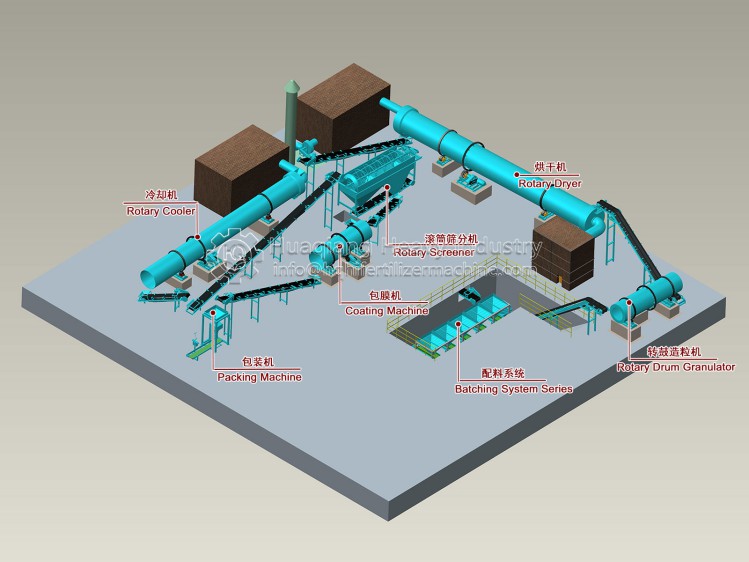performance characteristics of double roller fertilizer granulator machine
Operation method of fertilizer granulator machine.
The double roller press granulator is an important granulation equipment for the organic fertilizer manufacturing process. There is no need to add any wetting agent. The use of the roll extrusion granulator is simple in process and easy to operate. . Installation and commissioning of such equipment is also very simple.
Installation: During the installation of the granulator, the granulator is important. It is installed in coordination with the process to determine its elevation and horizontal position, and the bracket is directly fixed on the machine.
Commissioning: After the installation of the dry roll granulator, the machine to be commissioned is adapted to the production requirements of fertilizers.
1. Adjustment of the gap between the pressing roller: adjust the distance between the driven shaft and the step according to the drive shaft of the production roller: stop, the caps on both ends of the driven shaft are released, and the new setting is between the two rollers when the two parts have the same rotation direction The rollers do not collide.
2. External adjustment of the socket: 1. Axis adjustment: unload the shaft piece of the drive shaft, rotate the eccentricity, the eccentric displacement corresponds to the promotion of the active roller shaft. Adjustment of circumferential positioning: Unload and loosen the passive gear and adjustment bolt to disengage the slight adjustment sleeve and the passive gear, and roll to see the purpose of adjustment.
The installation and commissioning process of the roll extrusion granulator is simple, but pay attention to the use of no-load start, pay attention to the machine for regular maintenance, only in this way can guarantee the limited use of the machine and bring greater economic benefits to the company.

The functions of the roller extrusion granulator.
The working principle of the roller extrusion granulator is very simple, with a total of four functions:
1.In order to ensure that the equipment can achieve continuous feeding during extrusion granulation, the feeding equipment generally selects screw conveyor and vibrating conveyor.
2.This is followed by a forced feeding system. This is to control the speed of the feed. It seems that the speed is uniform during feeding, which can increase the feed volume and increase the output. Its function is to pre-degas and apply pressure in advance, thus Make the product of higher quality.
3.The dual-shaft output is used for roller extrusion, which effectively increases the speed of transportation, protects the bearing capacity of the main shaft, reduces damage, and improves the transmission effect. It can be a stable pressure of the hydraulic cylinder to allow the floating roller to run smoothly.
4.Granulation: The material sent by the conveyor driven by the motor is crushed by the shredding system, and then the powdered material is evenly added to the jersey shake, and then enters the roll mouth after forced degassing and pre-pressing, according to the specifications of the particles , With the rotation of the pair of rollers, it gradually reaches the shape. Then complete the automatic demoulding process.
The whole granulation process does not need to add any other items. It seems to maintain the high quality of the original product. The granulated particles are packaged and sold in products that meet the requirements of industrial standards after screening. Otherwise, it will be returned to this for re-granulation.








